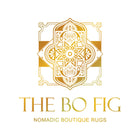A Journey to the Center: the Meaningful Medallions of Persian Rugs
The captivating beauty of Persian rugs lies not just in their intricate knots and vibrant colours, but also in the rich symbolism woven into their very fabric. Among these symbols, the central medallion, known as the "Toranj" in Farsi, holds a place of special significance. This captivating element acts as a focal point, drawing the eye and serving as a window into the history, culture, and artistry behind the rug.
A Journey Through Shapes: Decoding the Toranj's Form
The form of the Toranj is more than just an aesthetic choice; it carries a layer of meaning in itself. Here's a glimpse into some of the most common shapes and their associated symbolism:
-
The Circle: A timeless symbol of unity, eternity, and perfection, the circular Toranj is often adorned with elaborate floral designs like rosettes or carnations, symbolizing the cyclical nature of life and the bounty of nature. The perfect symmetry of the circle reinforces the idea of balance and harmony.
-
The Diamond: Evoking strength, stability, and power, the diamond-shaped Toranj frequently showcases intricate geometric motifs or a central rosette. This shape can also represent fertility, with the four points signifying the cardinal directions and the potential for growth in all directions.
-
The Hexagon: A representation of balance and harmony, the hexagonal Toranj might be adorned with stylized floral arrangements or interlocking geometric shapes. The six sides can symbolize the six days of creation or the interconnectedness of the universe.
-
The Oval: Symbolizing movement, grace, and sometimes even rebirth, the oval Toranj can feature flowing floral designs or even depict scenes from nature or mythology. The elongated form suggests a journey or transformation.
Beyond the basic shapes, we encounter unique forms like the Lachak Toranj. Here, a central medallion is surrounded by smaller corner shapes called Lachak. Often geometric, the Lachak add a dynamic element to the overall composition, perhaps signifying the protection or enclosure of the central motif.
A Symphony of Symbols: Unveiling the Stories Within
The Toranj is not just about form; it's about the stories woven within its borders. The specific motifs and colours used within the medallion can offer further clues about the rug's origin, meaning, and the weaver's artistic vision:
-
Floral Motifs: Roses symbolize love and passion, while tulips represent springtime and paradise. Cypresses can depict immortality, and vines can signify interconnectedness.
-
Geometric Motifs: Stars represent celestial bodies and divine guidance, while interlaced squares can symbolize protection or blessings.
-
Animal Motifs: Lions represent strength and royalty, while birds can symbolize messengers or the human soul. Dragons, especially in earlier rugs, were seen as protectors against evil.
-
Colours: The colour palette of the Toranj also holds meaning. Red symbolizes passion and protection, blue represents heaven and royalty, and green signifies nature and growth.
Understanding these symbols allows us to appreciate the Toranj not just as a decorative element, but as a narrative woven into the rug's very essence.
Woven in Time: The Enduring Allure of the Toranj
The central medallion in Persian rugs has transcended its decorative function to become a powerful symbol of cultural heritage and artistic expression. From the meticulous knotting techniques to the intricate symbolism embedded within, the Toranj tells a story – a story of a bygone era, a weaver's vision, and the enduring beauty of Persian artistry.
The next time you encounter a Persian rug, take a moment to appreciate the central Toranj. Let its intricate details transport you to a world of rich symbolism and immerse yourself in the enduring legacy woven into its very heart.
This is just a starting point for your exploration of the Toranj. Delving deeper into specific regional styles and their signature medallion designs can be a fascinating journey.





